I know, I know, I’ve already declared (months ago) that
Steve Garber’s exquisite, profound, deeply thoughtful book Visions of Vocation: Common Grace for the Common Good (IVP; $16.00) will surely be the Book of the Year, which we will properly announce in our Best of
2014 awards column at the end of the year.
There have been so many other good
releases this year — there will be a handful of other true very honorable
mentions.
It may be that the just
released A New Heaven and a New Earth:
Reclaiming Biblical 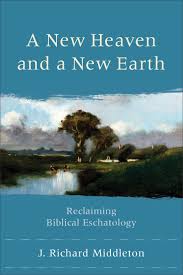 Eschatology by J. Richard Middleton (Baker Academic; $26.99) is the most
Eschatology by J. Richard Middleton (Baker Academic; $26.99) is the most
important book in its field, a magnificent, innovative, lasting contribution
to the field of Biblical studies. I can hardly understate just how significant this new book is.
Walter Brueggemann says, “when his book catches on, it will have an immense
impact…”
James K.A. Smith notes
that “Richard Middleton has been one of my most important teachers. Every
encounter changes me. This book is
no different…. if as widely read as I hope, this book would transform North
American Christianity.”
Interestingly for many Hearts & Minds customers, this
book about God’s promises to renew all things, is actually not unrelated to Garber’s
important voice about recovering a sense of vocation in a fallen, complex
world. It is also somewhat related to what
has become our biggest selling item in years, the colorful, nuanced, delightfully interesting, and very useful DVD curriculum published by the Acton Institute, For the Life of the World. All three have some connections to
Toronto’s Institute for Christian Studies graduate school in the 70s where they
were, in one way or another,
influenced by the legendary Christian philosopher of aesthetics, Calvin
Seerveld, and the philosopher cum Bible scholar Al Wolters who wrote the
often-cited Creation Regained: The Biblical Basis for a Reformational Worldview. Like Transforming Vision, which Richard Middleton co-authored in 1984,
these innovative reformational thinkers at ICS did their high level scholarship
in light of the inherent connection between different acts of the Biblical
drama: creation-fall-redemption-and restoration/consummation.
H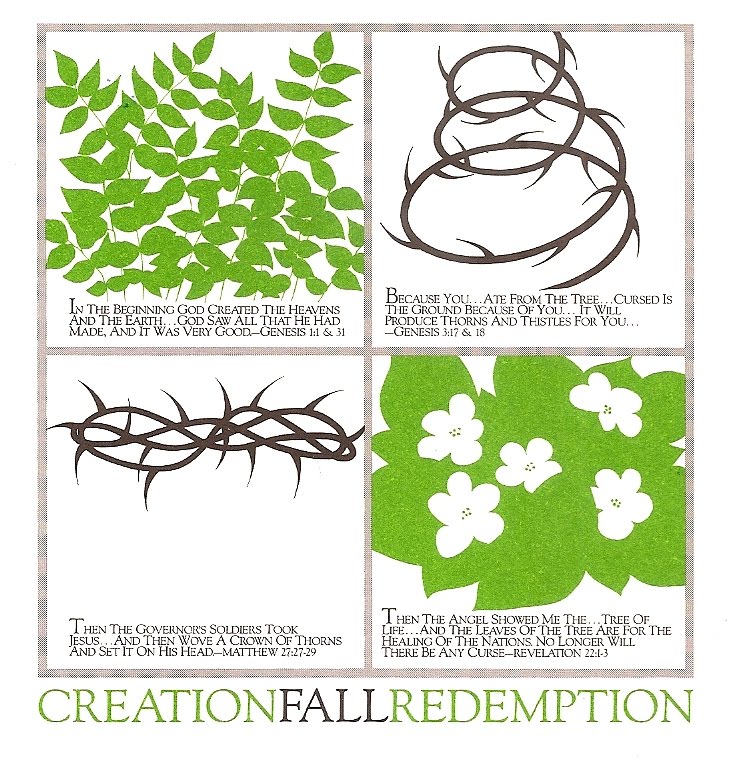 ere, on the left, is how my dear friend, Bonnie Liefer, an artist working for the CCO (Coalition for Christian Outreach) has shown the Biblical story, inspired somewhat by these same teachers back in the 1970s. Notice the themes from Genesis 1 and 2, Genesis 3, Matthew 27 and Revelation 22.
ere, on the left, is how my dear friend, Bonnie Liefer, an artist working for the CCO (Coalition for Christian Outreach) has shown the Biblical story, inspired somewhat by these same teachers back in the 1970s. Notice the themes from Genesis 1 and 2, Genesis 3, Matthew 27 and Revelation 22.
Richard’s passion to explain a full-orbed and fully Biblical holistic eschatology, the last square on the lower right, so to speak — God restoring all creation, following the revealed trajectory in the Bible of a good creation, a radical fall into idolatry and distortion, a decisive redemption by Christ, and a creation-wide restoration — was nurtured by that story, taught by scholars in that place in those years.
Understanding the historical-redemptive unfolding of the
Biblical drama in light of this grand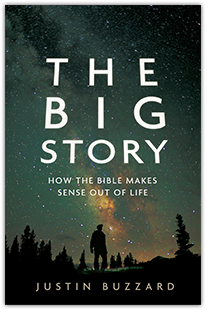 story has been one of the most popular
story has been one of the most popular
developments in popular-leve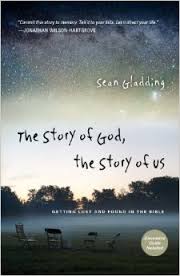 l Biblical literacy in this generation and nearly
l Biblical literacy in this generation and nearly
an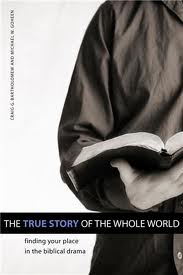 y church plant (in this remarkable era of so many fresh church plants)
y church plant (in this remarkable era of so many fresh church plants)
nowadays, besides cool graphics and nifty names, will invite people to find their story
and meaning in light of the big story of God’s redemptive work in
the world. From emergent to missional, from Acts 29, The Gospel Coalition, the Fresh Expressions movement, to the 1001 new projects the Presbyterians are working on, the language of story, and the appreciation for the vision of the Kingdom of God and this renewed emphasis of the overarching trajectory of the Biblical narrative is central. It seems
that all kinds of folks are surprised by hope these days.
Yes, Surprised By
Hope: Rethinking Heaven, Resurrection, and the Mission of the Church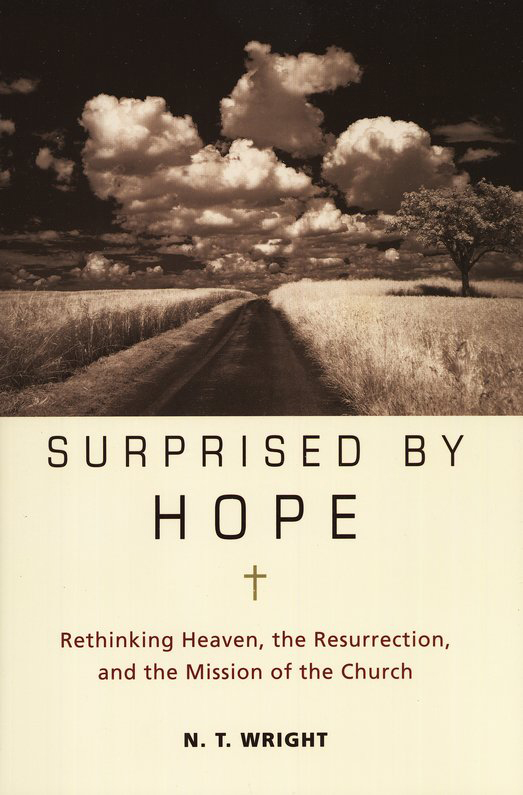 (HarperOne; $24.99) by the
(HarperOne; $24.99) by the
former Anglican Bishop, N.T. Wright, may have popularized these themes more than
early books of Wolters, Middleton, et al, but there is no doubt that Wright
himself was influenced by them (and was in conversation with them in the late 70s via his
friendship with Middleton’s co-author, Brian Walsh, whose recent work I
highlighted just a week or so ago, here.)
If you do not know the magisterial, much-discussed Surprised by Hope you should know
it. It is surely one of my all time favorite books. If you aren’t much of a
serious reader, the Surprised by Hope DVD curriculum expertly produced by Zondervan, is an informative, clear-headed, lecture series with N.T. Wright and is very creatively
produced. I cannot recommend it enough. Both the book and the DVD remind us,
to put it simply, that many of our most cherished assumptions (and much of our
popular vocabulary) about heaven and the afterlife are not Biblical.
Of course it is more complicated, and
there are perplexing Biblical texts and notions from church history – for better
or worse – that must be examined, but the short version is sensible, but counter-intuitive for many, still: God’s Kingdom comes “on Earth as it is in
Heaven” and the end of the grand Biblical narrative (Revelation 21-22) is not about us leaving the Earth, but Emmanuel, again, God with us, in a restored, healed cosmos. That is, Left Behind and
Hal Lindsey and apocalyptic bumper-stickers about the rapture notwithstanding, we don’t go to
heaven to live forever. Heaven
comes to Earth. The meek inherit the Earth. As Paul Marshall puts it in his tremendous book about living out the Christian life in various arenas and sides of life, “heaven is not my home.”
This is the carefully argued thesis of A New Heaven and a New Earth: Reclaiming Biblical Eschatology, Richard Middleton’s careful, complex, book of fascinating Biblical study.
SO IMPORTANT
I can hardly tell you (based on my own intentional
observations about these things for nearly 40 years) just how important this all is. It is not arcane or an eccentric little side matter. In what feels like a lifetime
ago, I considered writing a book about it.
WHAT GETS YOU UP IN THE MORNING?
You see, it is almost always the case that people live their lives in
light of some sense of what they expect in the future. Garber lapses into Latin and talks beautifully
about our telos. “Why do you get up in the morning”
is a more playful way of asking it, he notes in the powerful first chapter of his
first book, Fabric of Faithfulness:
Weaving Together Believe and Behavior (IVP; $17.00.) What gets us up, our
sense of what matters, the goal of our purpose driven lives, our telos, always animates and
guides and informs and shapes how we live. That is, our view of the end of things matters a lot.
W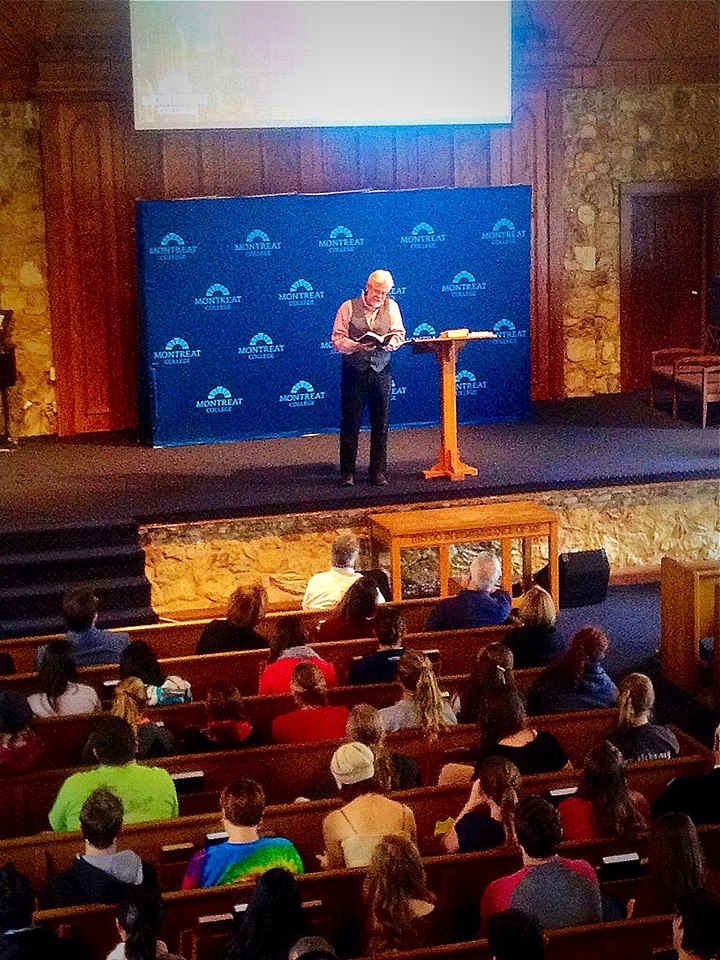 hen speaking on this very theme at Montreat College in
hen speaking on this very theme at Montreat College in
North Carolina last week – at a symposium for students on work and vocation,
arranged around keynote talks exploring themes of
creation/fall/redemption/restoration – I cited, I think, Romans 8, that
mentions that the whole creation is groaning, awaiting the salvation of
humankind so that the creation itself can be healed. John 3:16, I reminded them, uses the Greek word cosmos for world, which is to say that when Jesus
says “God so loved the world” He means just that. (And Leonard Sweet once quipped, if God so loves the world,
why don’t we?)
Yes, we should care
about God’s good, if fallen world, because God loves it, and intends to rescue
it. The verse does not say that for God so loved our souls, or for God so loved our churches. Cosmos.
When more than one professor thanked me profusely after that talk at Montreat, I shared
my own little concern: am I just firing people up with my natural talent for
enthusiasm, but not really saying much new? Maybe my big insight that God died
to save the universe, that the new creation is really this world restored, that (as C.S. Lewis put it) “matter matters,”
is really just a lot of stuff we all know, dressed up as some big paradigm
shift. But just not that urgent to keep saying, over and over, as I tend to.
But — and this is the
point, for now — both professors insisted that they hear “all the time”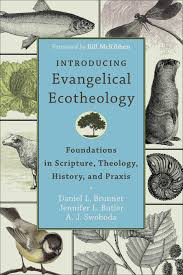 people
people
saying that we need not care for this Earth since “it’s all going to burn,
anyway.” Yep, we live inspired by our view of the end, and if we think God is whisking us off to some other place — we’re “only visiting this planet” as one famous Christian rocker said — then why care about current events, or much of daily life, really? I was once scolded (one can’t make this stuff up) for caring about world hunger because, as my critic explained, the worse things get here on Earth, the sooner Jesus will come back to carry us home to heaven. So, let ’em starve was the take-away of that awful eschatology. And it made a difference in that person’s daily living, including a blatant disregard for the poor and starving.
One professor of environmental studies at Montreat says he oddly gets asked from
evangelical church folks why a Christian college would teach ecology (again, since it is all going to burn.) Interestingly, he has also been asked this by secular colleagues from state universities as well. Why indeed would you (at your Christian college) teach environmental studies, they wondered, if your religion tells you it is all going to burn? Odd, both the skeptics from the church
and the secular university each assumed that a Christian college wouldn’t care about
caring about the Earth. Because God is going to destroy it all anyway and “take us to heaven to live with him there” as the beloved carol Silent Night puts it.
Which is just one example of why we’ve got work to do to
give a better account, to the church and to the world, of God’s gracious (Triune)
goodness in creating the world, blessing it, 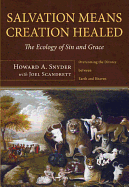 sustaining it, and – after our rebellion and tragic fall from
sustaining it, and – after our rebellion and tragic fall from
grace, the “vandalization of shalom” as Cornelius Plantinga put it in his
excellent Not The Way It’s Supposed to Be
– Christ’s own redemptive work to reclaim and restore the world He so
loves. That “salvation is creation
healed” (as Howard Snyder and Joel Scandrett put it in their great book of that
title) needs to be proclaimed with Christ-exalting clarity. That God is not scraping the covenant
made with all the critters (see Genesis 9) and nuke the creation, but intends to
remain faithful to the promises, and will remake and restore and heal the world is a
major theological truth that must be understood and explained, taught and
preached, appreciated and lived.
J. RICHARD MIDDLETON: AN AUTHOR YOU SHOULD KNOW
Enter Dr. J. Richard Middleton, (PhD, Free University of
Amsterdam), whose new book will help us more than any other serious study yet
done on this topic.
Middleton is professor of Biblical worldview and exegesis
at Northeastern Seminary and adjunct professor of theology at Roberts Wesleyan
adjunct professor of theology at Roberts Wesleyan
College. (He has also taught at
Colgate Rochester Crozer Divinity School for a season.) I have already mentioned that he co-wrote The Transforming Vision and its sequel, Truth Is Stranger Than It Used to Be with Brian Walsh. His large, scholarly work on what it
means to be human, exploring the nature and consequences of the Biblical
teaching about the imago dei is
called The Liberating Image (Brazos Press;
$27.00) and it has been considered by some to be the definitive book on the
subject. Heavy as it may be, it is
an extraordinary work, with vast implications, and should be on the shelf of
anyone with serious interested in Biblical theology. It is that important.
A New Heaven and a New Earth is also a bit hefty, over 300 pages, some of it fairly
New Heaven and a New Earth is also a bit hefty, over 300 pages, some of it fairly
detailed. But it is not designed
only for the guild, or Bible professors or even clergy, but is offered as a
serious gift for anyone who wants to read and study and learn. It is, like Liberating Image, so significant in its research and so fresh in its
articulation, that it might be considered definitive. The great wordsmith and thoughtful preacher Cornelius
Plantinga observes that it is “comprehensive, learned, accessible, and
exciting.” Al Wolters says he is inclined to call it “magnificent.” Terence Fretheim of Luther Seminary
says it “deserves wide attention.”
We helped “launch” this book at the very first place it was sold, last weekend’s conference on imagination and innovation in the workplace at Redeemer Presbyterian’s NYC Center for Faith and Work. Apparently Keller’s team there thought it was important enough to have him speak at their famous yearly gathering about this brand new book.
The book opens with a poignant story of Richard as a young man, sitting with a friend atop a glorious mountain in his Jamaican homeland. They climbed there to enjoy a beautiful
sunrise, and were deeply taken by the sublime beauty of it all. As they praised God for this moment,
Richard’s friend said “what a shame it is all going to burn up.” Even as a young guy, he recoiled. A strong evangelical Christian with early familiarity and love for the Bible, Richard sensed that this was
not so. He set himself, he tells
us, to explore this theme in the Bible, and it has been a passion of his ever since.
HYMNS WITH BAD LINES AND BAD IDEAS
He pokes at bit at some old hymns that talk about going to
heaven, to live there forever.
From obvious examples like “I’ll Fly Away” or “When the Roll Is Called Up Yonder” to lines in “Love Divine, All Love Excelling” or “My Jesus, I Love Thee” to “Silent Night” and
many others, he documents our fuzzy thinking about all this. (Wasn’t it the revival preacher A.W.
Tozer who said the church doesn’t have to tell lies, we just get together and
sing them?) I have my own
list of stupid lines that I find detrimental, and these few pages are striking and will cause us to think. Again, we have our work cut out for us
if we are going to unlearn centuries of poor articulation and outright unbiblical
ideas.
After this opening foray in Part 1, sharing the journey “from creation to
eschaton” and showing the real plot of the Biblical storyline, Middleton walks us
through in Part 2 what he calls “holistic salvation” in the Old Testament. From “the exodus as a paradigm of
salvation” to “earthly flourishing in law, wisdom, and prophecy,” and even the
nature of the coming of God in both judgment and salvation, he offers
excellent, illuminating, clear Bible study, including some formulations that
may be new to some. This is rich, fresh, solid stuff.
Whether you
are at a mainline church or an independent, evangelical one, whether you are
highly liturgical or less so, I am convinced some of this material will simply
rock your world. You will be made to reconsider shibboleths and sacred cows and you will have “aha” moments.There are
fascinating and useful footnotes, too (a lot of them — hooray!) and Richard’s passionate insight about the
Biblical text is matched by his fluency in the most important literature, old
and recent, scholarly and popular.
In the next 50 or so pages, Middleton offers in Part 3 two
strong chapters under the headline “The New Testament’s Vision of Cosmic
Renewal” and here he echoes N.T. Wright’s good work about how the resurrection
of the body implies so very much about our future hope. (Middleton also explores “the
restoration of rule” which is excellent and generative, drawing somewhat on his previous work on our task as image bearers) even as he points us to
what it means to say that God intends “the restoration of all things.” Again, this is dynamic, fresh, and for some, new, radical material. I have not read a book about the Bible as exciting as this in years!
For what it is worth, I had an advanced copy of the manuscript, which is how I had the good fortune of getting to study this long before it arrived this week.
BUT WHAT ABOUT…
Part 4 of A New Heaven and a New Earth looks helpfully at problem texts for holistic
eschatology. After my presentation at
Montreat College’s symposium on this topic last week folks
lined up to talk about the rapture, the curious I Peter passage about the
elements being destroyed (or does it say “disclosed” as any good study Bible
will note?) and other contested texts. This part of the book is immensely helpful, and you will need it if you are using the creation-fall-redemption-restoration drama as part of your own spiritual formation work. If you see salvation not as an escape plan from the world, but as a “homecoming” and restoration to our place in a (re)new(ed) earth, these few problem passage must be addressed.
The Greek word used in the popular “all things new” promise of
Revelation 22 is the word that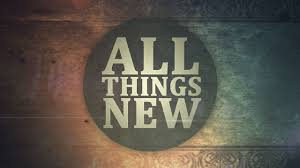 means re-newed (not “brand new.” They had a
means re-newed (not “brand new.” They had a
word for that, but that isn’t what John saw in his vision; it is a restored earth, not a brand new earth, indicating some continuity, between, as they say, this world and the next.
Why do we continue to think of eternal life as some ethereal place for
disembodied souls (and worse yet, why do we say dumb stuff when a child dies,
like “God needed another angel” as if humans ever become angels?) The Biblical tradition is does not
offer some dream-world, some woo-woo spiritual soup into which we all merge — Christians give a different account for our hope than do Hindus, Buddhists or Platonists.
We care about the environment because God has pledged his Holy Self to it.
And Jesus entered it, and died for it. He — remember Colossians 1 — holds it all together, and is reconciling “all things” through the blood of His cross.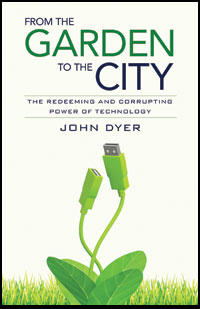
The Bible teaches that this
good world will be saved and restored and renewed and transformed as we, in renewed,
resurrection bodies, rule once again in some kind of culturally developed paradise. As the very good book on technology and digital culture by John Dyer (who did a workshop Montreat) puts it, we move “from the garden to the city.”
SO WHAT?
Does all of this really matter that much? I will give you my short answer, and tell you about how
Richard answers it, as well.
As I tried to develop in my passionate Montreat College
talk, I am convinced (as I wrote earlier) that how we think of the future does
indeed effect the tone and vision of our contemporary lifestyles. It’s that telos thing mentioned previously: how we think about the future, our end-goal, colors the sort of hope we have now, which shapes the kind of life we live, the things we invest in, the stuff we do, and how we do it, and how we explain it to others.
When a couple finds themselves to be
pregnant, it slowly changes everything: the birth which is to come starts to
effect daily choices, from nutritional decisions to economic ones to even legal matters. The couple grows closer in their love
as they dream together about the good future they will share with their
offspring. They start preparing
the baby’s room, shopping for a crib, picking names. Oh yes, this future blessing has present consequences. The reality of what is to come rubs off in the here and now,
and nothing is ever the same. The
present itself is pregnant and the future is like a magnet, pulling us toward
its hope. As we sing at
Christmastime, “the hopes and fears of all the years” are met in Christ. This alludes to our past longings and
anxieties, but perhaps also to those regarding the years yet to come. I truly believe that our daily
discipleship is deepened and enhanced and given direction by a proper
understanding of the new creation God has promised to bring into our
midst. We start to live in the “already” even though we know the Kingdom’s fullness is “not yet.”
N.T. Wright assures us of the confidence we can have, given that Christ Himself has walked into and through death, and come out alive on the other side, in the reality of new creation. It is, he says, like a call we may get in the middle of the night from an earlier time zone. It may seem like night to us, but — in fact! — the caller is calling us from the future, and it is bright as day there. Yes, with Christ’s Easter victory and ascension, we know the future is assured. He is risen, in the body, a first hint of the new creation which is ours.
David Arms offers this artful rendering of the creation/fall/redemption/restoration story: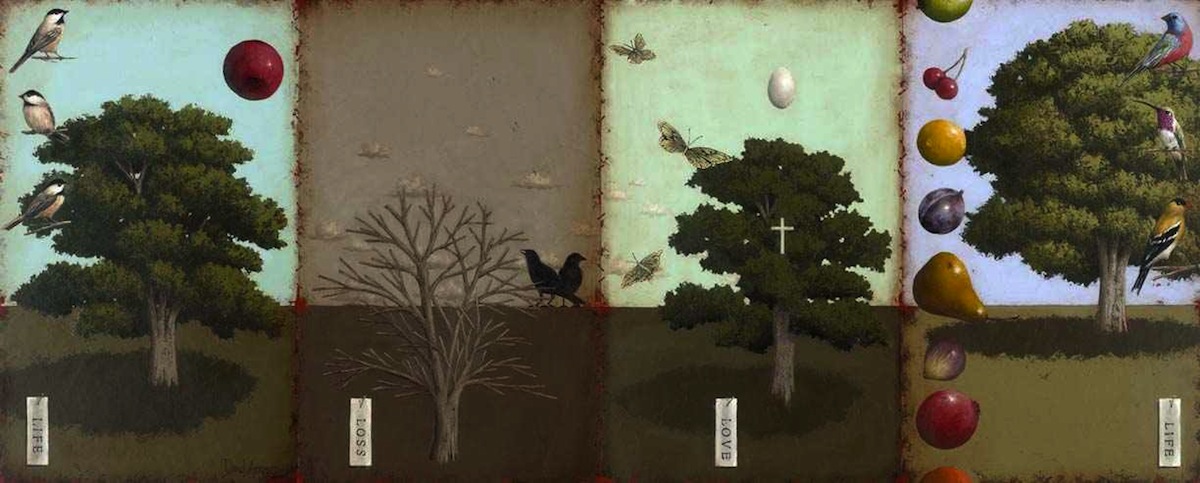
As Marva Dawn and Tom Wright and Brian Walsh have all
written, our current-day faith communities can be seen as actors doing
improvisation, acting out a missing scene or two in coherent ways, inspired and
informed by the parts of the play we have: the first part and the last
part. We know how the playwright worked in the past. We know how the story resolves. Here in the middle of time,
we improvise, knowing the plot of which we are a part, and knowing how that
story ends.
Understanding the
ending correctly is essential for getting our daily work now right. This stuff really does matter, and it matters a lot. Which is why I think this book is so very right for our times, when there is renewed interest in the fate of the Earth and the full picture of the Story of God.
Here is how our friend Sylvia Keesmaat (co-author of Colossians Remixed and editor of The Advent of Justice) puts it, in her rave review blurb inside the front pages:
Richard Middleton is talking about a revolution! Why should Christians settle for the anemic goal of eternity spent in heaven when the Bible’s robust vision is one of a resurrected humanity on the new earth? Set your imagination free from the chains of other-worldly dualism, and enter into the brilliant and fascinating world of the biblical story, where the vision of all things redeemed breathes new life into our discipleship.
Richard Middleton also wants to show how this has vast consequences; almost like he’s talking about a revolution. He ends A
New Heaven and a New Earth with a major section exploring how this all
might matter now.
He calls this
section (perhaps unwisely, in my view) “The Ethics of the Kingdom.” He does not mean only ethics as some
might think of that word – what we are to believe about euthanasia or lying or genetic engineering or sexuality)
but he means how we live out our daily life, in a full-orbed, multi-faceted,
way that is animated by a Kingdom vision, embodied in society.
He starts with Luke 4, that famous passage where Jesus reads from an
Isaiah passage which alludes to the Year of Jubilee in Leviticus 25. This Nazareth manifesto insists that
Jesus is the long-awaited God of Israel who is bringing this new era of shalom and grace
to the culture. Richard’s explication of the implications of this Jubilee
theme is remarkable.
He begins the second chapter in this last section like this:
In the receding chapter I argued that Jesus’s proclamation
of the kingdom of God in his sermon at Nazareth was good news because it
addressed his hearer’s full-bodied, concrete earthly needs. But the episode at
Nazareth did not end on a positive note, with the praise of his audience. It is
the burden of this chapter to explore how Jesus went on to complicate this good
news, so that it would not be understood superficially and self-righteously.
Rather, the good news of the kingdom can be grasped only through a radical
challenge that requires a fundamental reorientation of life.
I wish I could summarize this provocative chapter where he
does close readings of many gospel passages, and draws out important mandates for our Jubilee vision. He is both prophetic and pastoral, here, and I appreciate how he warns us – including
those who are fond of worldview education, and kingdom language – to seek God’s
Spirit to guide us in these perilous days ahead. I have read this chapter twice, now, and commend it to you
as an excellent way to end this extraordinary, vital work.
Ahh, but that isn’t even the end.
There is an appendix that will appeal to those interested in
Christian scholarship, in other books on this topic, and on recent church history. The appendix is called “Whatever Happened to the New Earth”
and there Middleton annotates a variety of books and schools of thought, explaining in this
literature review the twists and turns of the story where we’ve tended to get
this topic so very wrong. He does
review Wright, and Randy Alcorn, and others who have in recent years reminded
us that (as Wright put it in our
backyard a few years ago, preaching from his book How God Became King) “Orthodox Christian doctrine affirms the
rescue of the created order itself, rather than the rescue of saved souls from the created order.”
Richard is not alone in making a case for a very robust,
very multi-dimensional, very “this worldly” sense of God’s rescue plan. He is not alone in insisting that this
is exactly what the Bible teaches, misunderstandings and heresies and bad pop
theology notwithstanding. But with A New
Heaven and a New Earth: Reclaiming Biblical Eschatology he has become the
preeminent scholar who has given us the preeminent work on this vexing, vital
subject. It is my hope that every
Bible teacher, every pastor and preacher, and every Christian who longs for a
more coherent, meaningful, faithful daily discipleship struggles long and hard
with the content of this book. It is that important. Our visions of the future, and our faithfulness to the
Biblical story, matters more than we may know.
Getting this right is urgent. This book will help.

AND A FREE BOOK — A $15.00 VALUE. OFFER GOOD UNTIL 11-16-14
To sweeten the deal just a bit, if you buy this book now at our sale price we will – this week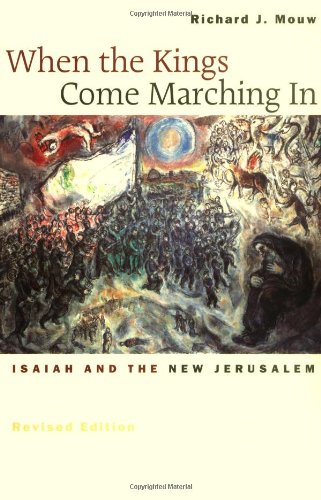 only
only
– send you also a free copy of one of my all time favorite books, a little book that
is as life-changing as any I know on these topics, Richard Mouw’s lovely When the Kings Come Marching In: Isaiah
and the New Jerusalem (Eerdmans; $15.00.)
You know (and you will know better, if you read the Richards — Middleton and Mouw) that humankind was given the grand task to “tend
and keep the garden” which, as Genesis 1 puts it, means we are to “fill the
Earth.” This so-called “cultural mandate” implies God wants us to cultivate or “fill”
creation by developing its glorious potential. From schools to CD players, from games to governments, art to astrophysics, humankind
has filled the Earth. Mouw reminds us that the Psalmist claims that the Earth
is the Lords and the “fullness thereof” which is an allusion to the
“filling” – which is to say, the development of human culture, skyscrapers and all. God must love the Beatles and Monet and chocolate and ipads,
perhaps. In the famous “wealth of
the nations” passage of Isaiah 60, this filling, this stuff, the cultural
artifacts (like lumber from Lebanon) are renewed and purified for the new
creation, another signal that we are not destined to inhabit some disembodied
heaven singing worship songs for eternity. Isaiah and John imagine a new city filled with good
stuff, animals and culture and restored civic life. “What are [the international commercial vessels] the ships of Tarsish doing here?” Mouw asks?
I hope you wonder that, too. Knowing at least a bit about what God is working towards will help us discern norms and patterns for our engagement in culture, now. We will give you this great book for free if you order
Richard Middleton’s A New Heaven and a
New Earth right away. While
supplies last, naturally — we’re not in the new Earth yet, so we have some limits. Our offer ends November 16, 2014.
The BookNotes offer of 20% OFF A New Heaven and a New Earth remains indefinitely, of course,
but we can only give away the Mouw book for the next few days. I hope you agree that these two books, one on sale and one for free, could be very helpful for you and yours.
BookNotes

SPECIALDISCOUNTANY ITEM MENTIONED
20% off
order heretakes you to the secure Hearts & Minds order form pagejust tell us what you want
inquire here
if you have questions or need more information
just ask us what you want to know
Hearts & Minds 234 East Main Street Dallastown, PA 17313 717-246-3333
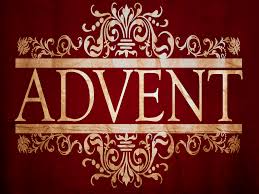 (rather cleverly, if I do say so myself), get ready to get ready.
(rather cleverly, if I do say so myself), get ready to get ready.  (which in a mysterious way has already begun now as we inhabit
(which in a mysterious way has already begun now as we inhabit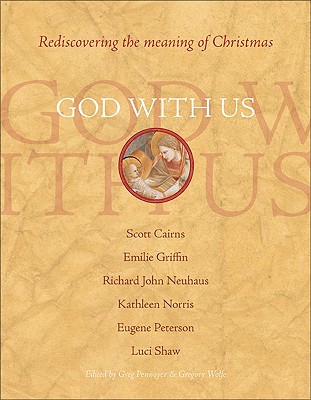 od With Us: Rediscovering the Meaning of Christmas
od With Us: Rediscovering the Meaning of Christmas 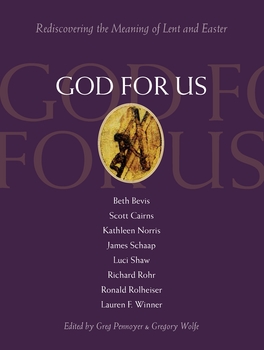
, of human life. Once a year, each Christmas, for a few
 I have long thought that Christmas is a wonderful time for
I have long thought that Christmas is a wonderful time for
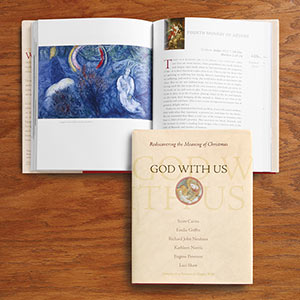
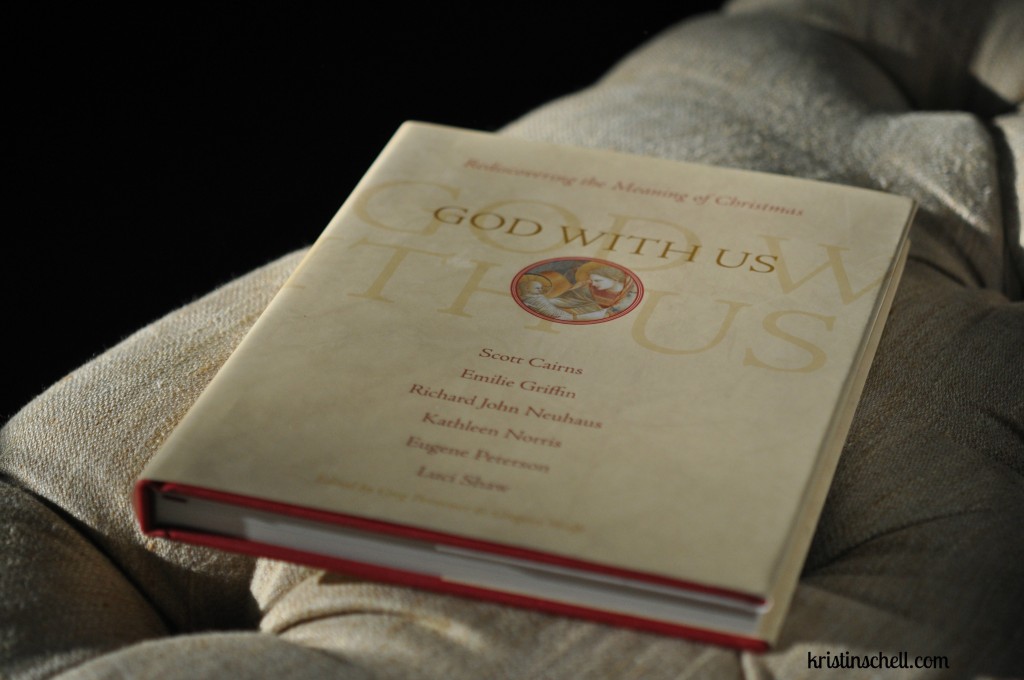

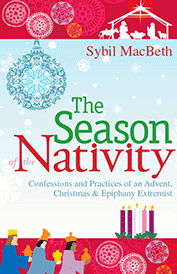 he Season of the Nativity: Confessions and Practices of an Advent,
he Season of the Nativity: Confessions and Practices of an Advent,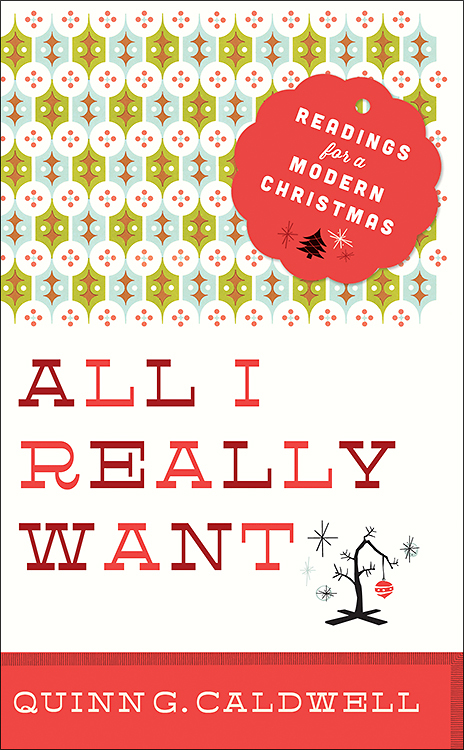 ll I Really Want: Readings for a Modern Christmas Quinn G.
ll I Really Want: Readings for a Modern Christmas Quinn G.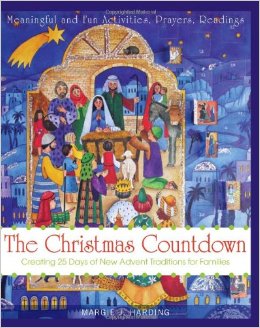 he Christmas Countdown: Creating 25 Days of New Advent Traditions for
he Christmas Countdown: Creating 25 Days of New Advent Traditions for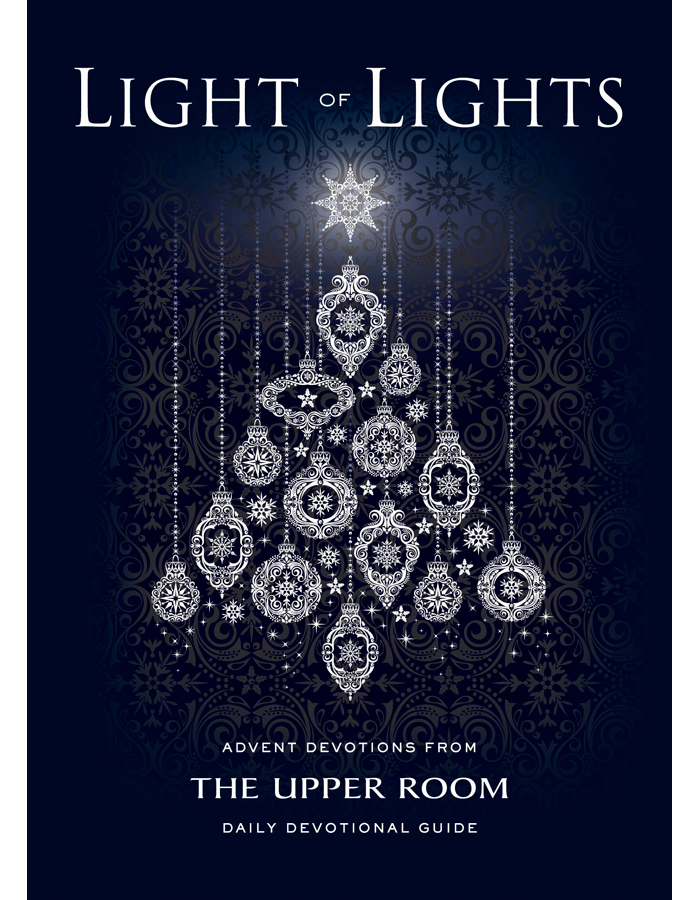 ight of Lights: Advent Devotions from The Upper Room Upper
ight of Lights: Advent Devotions from The Upper Room Upper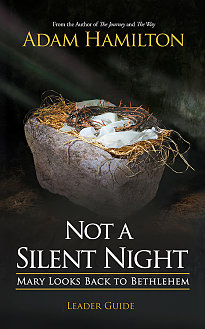 ot a Silent Night: Mary Looks Back to Bethlehem Adam Hamilton
ot a Silent Night: Mary Looks Back to Bethlehem Adam Hamilton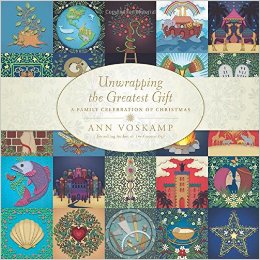 nwrapping the Greatest Gift: A Family Celebration of Christmas Ann Voskamp (Tyndale) $24.99 Last year we raved about a very handsome hardback devotional by Ann Voskamp, the amazingly good writer of the very popular One Thousand Gifts. It was called The Greatest Gift. There is a fabulous DVD curriculum to use with it, which explores the great, rich tradition of “The Jesse Tree.” We were fond of that book and DVD, too, but can hardly express how this material has generated yet another Advent book by Ms Voskamp — a full-color, oversized hardback with good, glossy pages, which beautifully helps families explore moving scenes from the Bible that lead us, step by step, through the history of redemption and towards the birth of Christ and the Advent of His Kingdom. Vivid, contemporary illustrations enhance the Scripture readings and questions and activities; links for downloadable ornaments are included that help communicate the stages of salvation history, starting with the Garden of Eden. On the back cover of Unwrapping the Greatest Gift they invite us to “Celebrate the best love story of all time with your family!” Indeed, this helps your family retrace the linage of Jesus and fall in love with the story of God, unfolded bit by bit, with very nice artwork and these great downloadable ornaments.
nwrapping the Greatest Gift: A Family Celebration of Christmas Ann Voskamp (Tyndale) $24.99 Last year we raved about a very handsome hardback devotional by Ann Voskamp, the amazingly good writer of the very popular One Thousand Gifts. It was called The Greatest Gift. There is a fabulous DVD curriculum to use with it, which explores the great, rich tradition of “The Jesse Tree.” We were fond of that book and DVD, too, but can hardly express how this material has generated yet another Advent book by Ms Voskamp — a full-color, oversized hardback with good, glossy pages, which beautifully helps families explore moving scenes from the Bible that lead us, step by step, through the history of redemption and towards the birth of Christ and the Advent of His Kingdom. Vivid, contemporary illustrations enhance the Scripture readings and questions and activities; links for downloadable ornaments are included that help communicate the stages of salvation history, starting with the Garden of Eden. On the back cover of Unwrapping the Greatest Gift they invite us to “Celebrate the best love story of all time with your family!” Indeed, this helps your family retrace the linage of Jesus and fall in love with the story of God, unfolded bit by bit, with very nice artwork and these great downloadable ornaments. 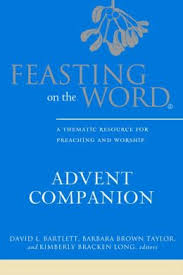 easting on the Word Advent Companion: A Thematic Resource for Preaching and Worship edited by David L. Bartlett, Barbara Brown Taylor, and Kimberly Bracken Long (Westminster/John Knox) $25.00 You very well may know all four volumes, of all three liturgical cycles, all 12 of the Feasting on the Word preaching commentaries. And you may have used some of the creative, helpful Feasting on the Word Worship Companion volumes which offer liturgical resources, prayers, litanies, and such, drawn from and inspired by the Feasting… project. Well, the rumors are true: they’ve created one convenient volume for Advent (and Christmas eve and Christmas day) use, that includes preaching ideas as well as worship aids, with ideas on everything from Advent wreath litanies, suggested hymns and carols to children’s service ideas and ready-to-use options for a mid-week service.
easting on the Word Advent Companion: A Thematic Resource for Preaching and Worship edited by David L. Bartlett, Barbara Brown Taylor, and Kimberly Bracken Long (Westminster/John Knox) $25.00 You very well may know all four volumes, of all three liturgical cycles, all 12 of the Feasting on the Word preaching commentaries. And you may have used some of the creative, helpful Feasting on the Word Worship Companion volumes which offer liturgical resources, prayers, litanies, and such, drawn from and inspired by the Feasting… project. Well, the rumors are true: they’ve created one convenient volume for Advent (and Christmas eve and Christmas day) use, that includes preaching ideas as well as worship aids, with ideas on everything from Advent wreath litanies, suggested hymns and carols to children’s service ideas and ready-to-use options for a mid-week service.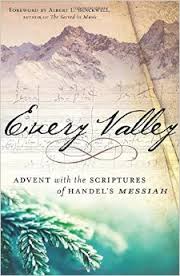 very Valley: Advent with the Scriptures of Handel’s Messiah foreword by Albert L. Blackwell (Westminster/John Knox) $15.00 This is an amazing, wonderfully done hardback (at a great price, I might add) that prints the libretto from Messiah (crafted by GFH’s friend Charles Jennens) and the NRSV Biblical texts upon which they are based. The 40 Biblical meditations are by a variety of pastors, scholars, and mainline denominational writers, adapted or drawn from the exegetical and theological material in — wait for it… — the preaching commentaries, Feasting on the Word Year A, B, and C. Actually, this is a great idea, with sophisticated, brief theological reflections based on these classic texts, presented in a very nice devotional format. As it reminds us on the back cover, “These memorable words can easily be heard in a kind of sentimental haze, familiar from countless church choir concerts and Christmas eve services. But the Scriptures Handel set to music in his most beloved oratorio also tell as powerful story — of God’s promised one, from prophetic foretelling to birth, death, resurrection, and ultimate victory. Find inspiration for your holiday season and year-round faith with these forty insightful meditations.” Hallelujah!
very Valley: Advent with the Scriptures of Handel’s Messiah foreword by Albert L. Blackwell (Westminster/John Knox) $15.00 This is an amazing, wonderfully done hardback (at a great price, I might add) that prints the libretto from Messiah (crafted by GFH’s friend Charles Jennens) and the NRSV Biblical texts upon which they are based. The 40 Biblical meditations are by a variety of pastors, scholars, and mainline denominational writers, adapted or drawn from the exegetical and theological material in — wait for it… — the preaching commentaries, Feasting on the Word Year A, B, and C. Actually, this is a great idea, with sophisticated, brief theological reflections based on these classic texts, presented in a very nice devotional format. As it reminds us on the back cover, “These memorable words can easily be heard in a kind of sentimental haze, familiar from countless church choir concerts and Christmas eve services. But the Scriptures Handel set to music in his most beloved oratorio also tell as powerful story — of God’s promised one, from prophetic foretelling to birth, death, resurrection, and ultimate victory. Find inspiration for your holiday season and year-round faith with these forty insightful meditations.” Hallelujah! 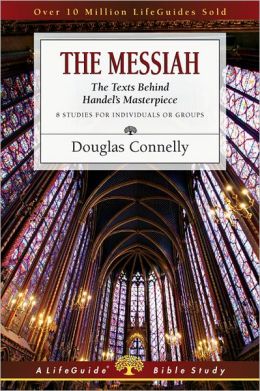 he Messiah: The Texts Behind Handel’s Masterpiece (Lifeguide Bible Study)
he Messiah: The Texts Behind Handel’s Masterpiece (Lifeguide Bible Study)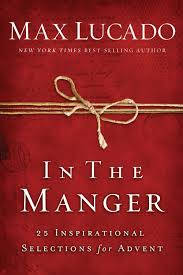 n the Manger: 25 Inspirational Selections for Advent Max
n the Manger: 25 Inspirational Selections for Advent Max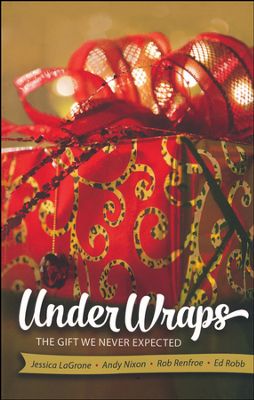 nder Wraps: The Gift We Never Expected Jessica LaGrone, Andy
nder Wraps: The Gift We Never Expected Jessica LaGrone, Andy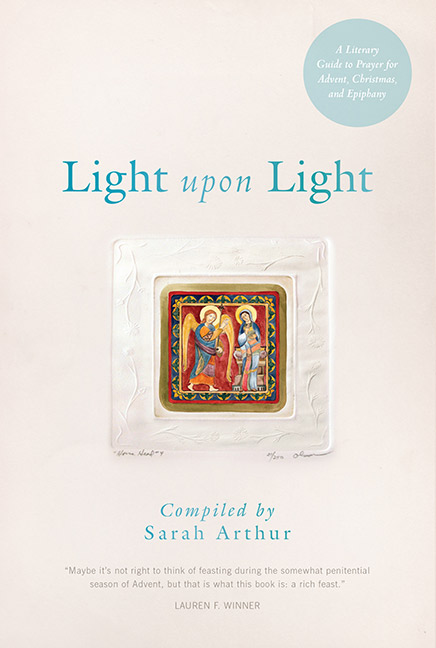 ight Upon Light: A Literary Guide to Prayer
ight Upon Light: A Literary Guide to Prayer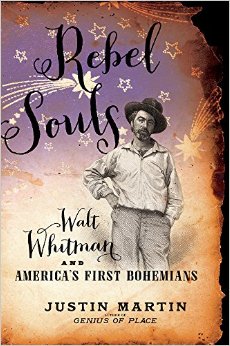 ebel Souls: America’s First Bohemians
ebel Souls: America’s First Bohemians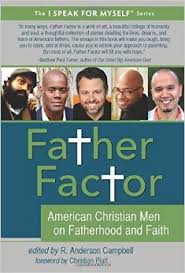 ather Factor: American Christian Men on Fatherhood and Faith edited
ather Factor: American Christian Men on Fatherhood and Faith edited friend I admire, and a dad I admire, and that two other former CCO staff
friend I admire, and a dad I admire, and that two other former CCO staff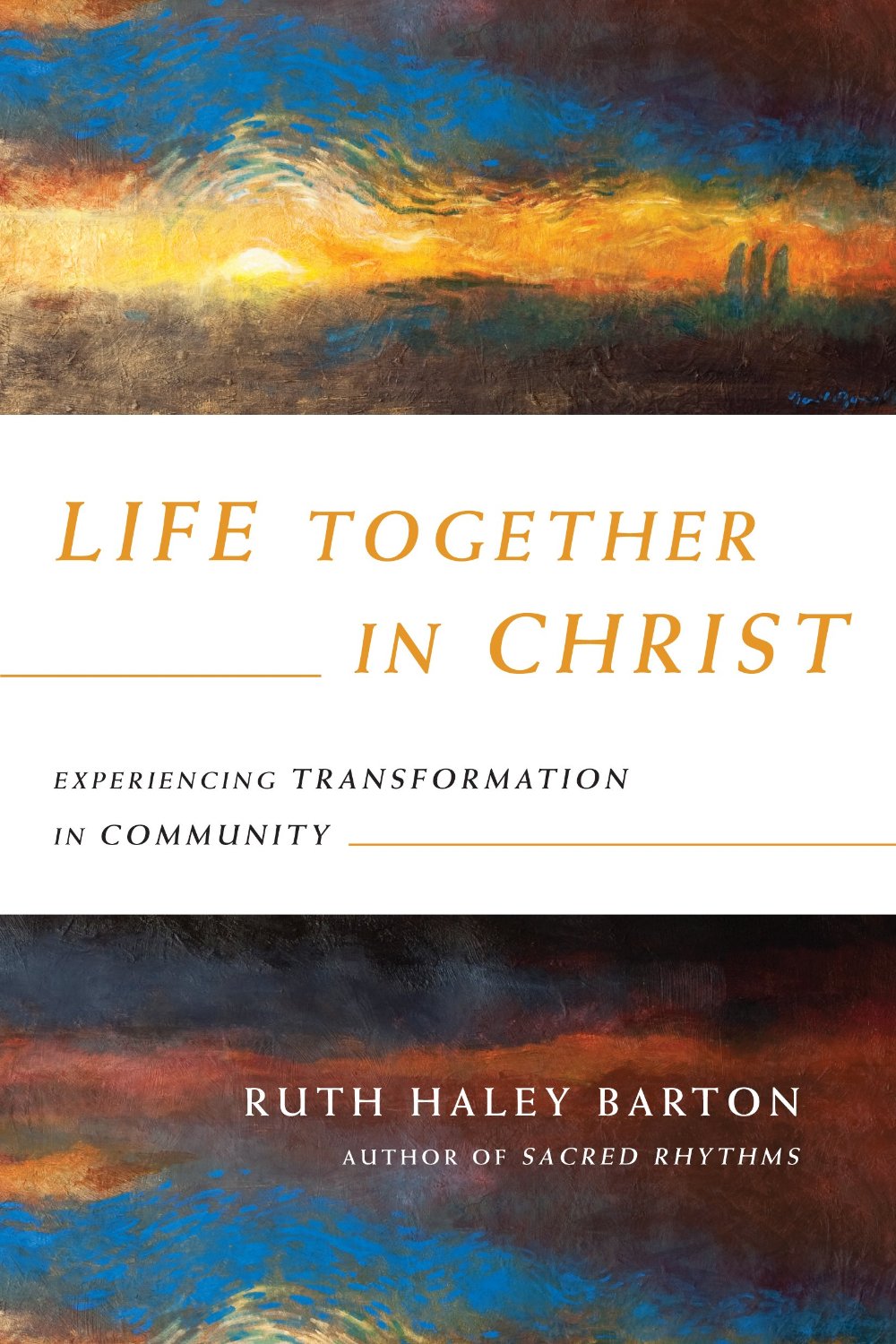 ife Together in Christ: Experiencing Transformation in Community Ruth
ife Together in Christ: Experiencing Transformation in Community Ruth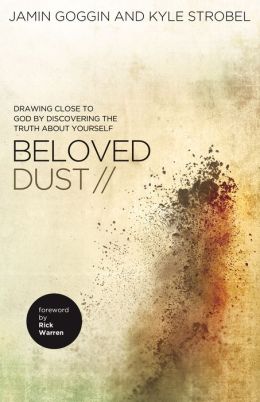 eloved Dust//Drawing Close to God By Discovering the Truth About
eloved Dust//Drawing Close to God By Discovering the Truth About hat Your Body Knows About God: How We Are Designed to Connect, Serve,
hat Your Body Knows About God: How We Are Designed to Connect, Serve,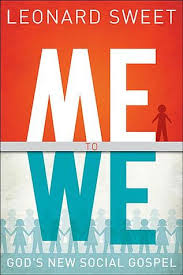 e and We: God’s New Social Gospel Leonard Sweet (Abingdon)
e and We: God’s New Social Gospel Leonard Sweet (Abingdon)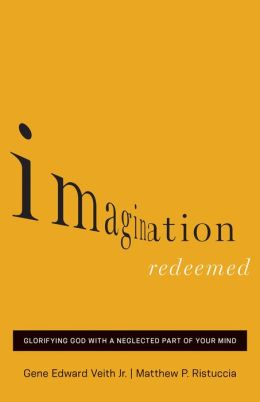 magination Redeemed: Glorifying God with a Neglected Part of Your Mind
magination Redeemed: Glorifying God with a Neglected Part of Your Mind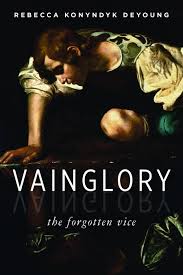 ainglory: The Forgotten Vice Rebecca Konyndyk DeYoung
ainglory: The Forgotten Vice Rebecca Konyndyk DeYoung ere, on the left, is how my dear friend, Bonnie Liefer, an artist working for the CCO (Coalition for Christian Outreach) has shown the Biblical story, inspired somewhat by these same teachers back in the 1970s. Notice the themes from Genesis 1 and 2, Genesis 3, Matthew 27 and Revelation 22.
ere, on the left, is how my dear friend, Bonnie Liefer, an artist working for the CCO (Coalition for Christian Outreach) has shown the Biblical story, inspired somewhat by these same teachers back in the 1970s. Notice the themes from Genesis 1 and 2, Genesis 3, Matthew 27 and Revelation 22. story has been one of the most popular
story has been one of the most popular l Biblical literacy in this generation and nearly
l Biblical literacy in this generation and nearly y church plant (in this remarkable era of so many fresh church plants)
y church plant (in this remarkable era of so many fresh church plants) (HarperOne; $24.99) by the
(HarperOne; $24.99) by the hen speaking on this very theme at Montreat College in
hen speaking on this very theme at Montreat College in people
people sustaining it, and – after our rebellion and tragic fall from
sustaining it, and – after our rebellion and tragic fall from adjunct professor of theology at Roberts Wesleyan
adjunct professor of theology at Roberts Wesleyan means re-newed (not “brand new.” They had a
means re-newed (not “brand new.” They had a

 only
only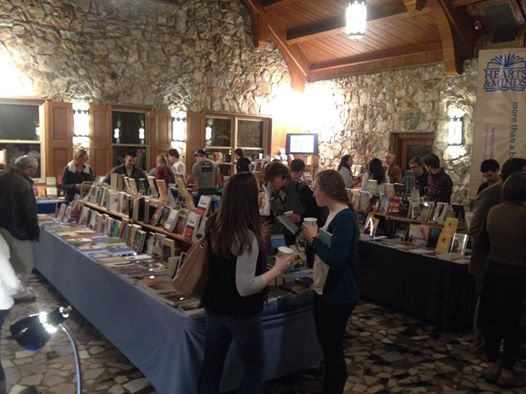 are doing there at that small, liberal arts college tucked into a mountainous cove in the Black Mountains of North Carolina. Doing workshops and selling books and speaking there, serving their “Faith and Vocation Symposium,” was surely one of the most memorable and rewarding things we’ve done this year. Thanks to folks there for hospitality and receptivity (and for help with the book packing!) It was a whirlwind event, but very meaningful for us.
are doing there at that small, liberal arts college tucked into a mountainous cove in the Black Mountains of North Carolina. Doing workshops and selling books and speaking there, serving their “Faith and Vocation Symposium,” was surely one of the most memorable and rewarding things we’ve done this year. Thanks to folks there for hospitality and receptivity (and for help with the book packing!) It was a whirlwind event, but very meaningful for us.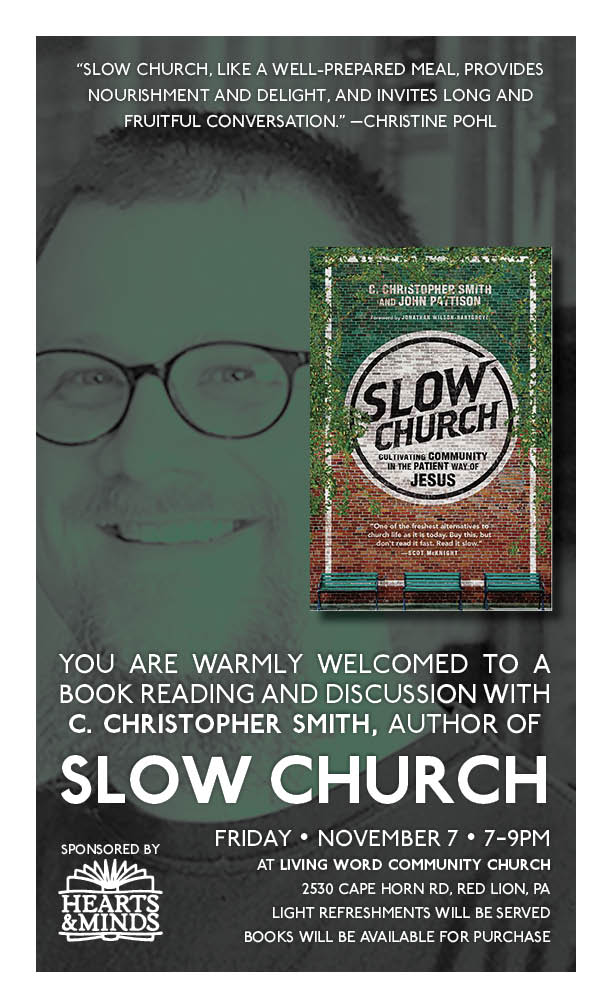 Chris, starting at 7:00 pm over at the nearby Living Word Community Church, 2530 Cape Horn Road, Red Lion, PA. (We’re very grateful for their support of our occasional projects, and their great coffee bar, free parking and warm space to host a book signing like this.)
Chris, starting at 7:00 pm over at the nearby Living Word Community Church, 2530 Cape Horn Road, Red Lion, PA. (We’re very grateful for their support of our occasional projects, and their great coffee bar, free parking and warm space to host a book signing like this.)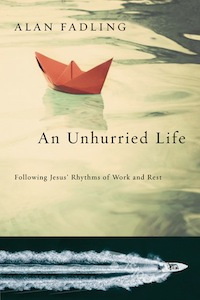 down, practicing spiritual disciplines, keeping Sabbath, focusing on quality, being deeply faithful rather then merely popular, we too often are undone by our own bad habits and co-opted imaginations. (Alan Fadling’s An Unhurried Life: Following Jesus’ Rhythms of Work and Rest is just one recent book that I found very, very helpful and wise in this area.) As Jamie Smith has reminded us in his stunningly important Desiring the Kingdom, our passions and desires and habits and practices are most often informed more by the secular liturgies of the world than the often thin formation generated within the local church.
down, practicing spiritual disciplines, keeping Sabbath, focusing on quality, being deeply faithful rather then merely popular, we too often are undone by our own bad habits and co-opted imaginations. (Alan Fadling’s An Unhurried Life: Following Jesus’ Rhythms of Work and Rest is just one recent book that I found very, very helpful and wise in this area.) As Jamie Smith has reminded us in his stunningly important Desiring the Kingdom, our passions and desires and habits and practices are most often informed more by the secular liturgies of the world than the often thin formation generated within the local church.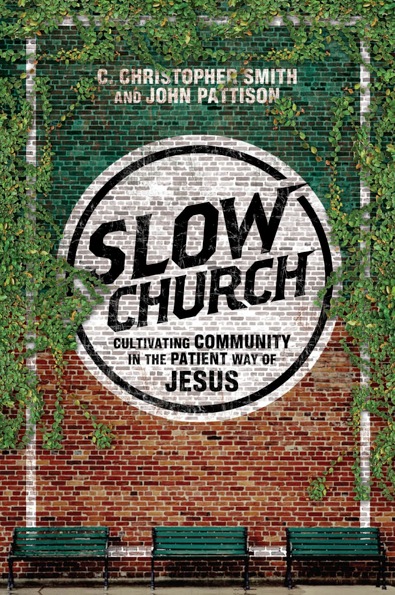 slow food theme, each unit of the book is envisioned as one of a three course meal.)
slow food theme, each unit of the book is envisioned as one of a three course meal.)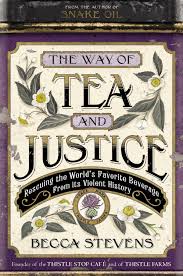 he Way of Tea and Justice: Rescuing the World’s Favorite Beverage From It’s Violent History Becca Stevens (Jericho Books) $22.00 Maybe you know the deep, profound, tender, feisty writings of this strong woman, who has given us lovely, thoughtful, good books in the past. Her own memoir, called Thistle was powerful and wonderfully written. Here she tells the story of her cafe and soap-making business that employs former prostitutes and addicts, giving them a new lease on life. Who knew this work with Thistle Farms and the Thistle Stop Cafe would end up not only being central to new stories and new lives for countless woman who have been abused, trafficked, silenced, but has become part of an astonishing movement to bring freedom and fair wages to women producers worldwide where tea and trafficking are linked by oppression and the opiate wars. As it says on the inside cover, “in this journey of triumph for impoverished tea laborers, hope for cafe workers, and insight into the history of tea, Becca sets out to defy the odds and prove that love is the most powerful force for transformation on Earth.”
he Way of Tea and Justice: Rescuing the World’s Favorite Beverage From It’s Violent History Becca Stevens (Jericho Books) $22.00 Maybe you know the deep, profound, tender, feisty writings of this strong woman, who has given us lovely, thoughtful, good books in the past. Her own memoir, called Thistle was powerful and wonderfully written. Here she tells the story of her cafe and soap-making business that employs former prostitutes and addicts, giving them a new lease on life. Who knew this work with Thistle Farms and the Thistle Stop Cafe would end up not only being central to new stories and new lives for countless woman who have been abused, trafficked, silenced, but has become part of an astonishing movement to bring freedom and fair wages to women producers worldwide where tea and trafficking are linked by oppression and the opiate wars. As it says on the inside cover, “in this journey of triumph for impoverished tea laborers, hope for cafe workers, and insight into the history of tea, Becca sets out to defy the odds and prove that love is the most powerful force for transformation on Earth.” 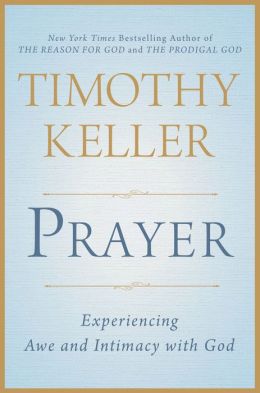 rayer: Experiencing Awe and Intimacy with God Timothy Keller (Dutton) $26.95 I probably don’t need to tell you that Tim is a thoughtful and articulate spokesperson for historic, Reformed faith, and is situated in Manhattan doing successful ministry with some of the world’s leading artists, financiers, designers, movers and shakers, along with the ordinary, forgetaboutit New Yawkers. Skeptic, seeker, struggler — anyone wanting a mature, no-nonsense, theologically mature exploration on the meaning and practice of Christian prayer will find this exceptionally valuable. Given that Tim’s own wife and he himself have suffered serious health issues (not to mention the stress of such a high-profile, demanding leadership calling) it should not come as a surprise that they have learned to practice daily prayer, and have considered its meaning, carefully, deeply. What might be surprising is how it didn’t come naturally, and how he has had to ponder, think, study, and obey the commands (and take in the promises) of the God of the Bible. Rev. Keller, as you might guess, is not fully comfortable with some of the more subjective mysticism floating around out there, and he does a good job distinguishing Christian spirituality that is wise and grounded from more trendy sorts of fascination with the inner life. More should be said, but this is an important book, a rare substantive contribution to a field that is loaded with titles, some good, some less so. Agree with all his conclusions or not, take up all his suggestions or not, this is very higly recommended.
rayer: Experiencing Awe and Intimacy with God Timothy Keller (Dutton) $26.95 I probably don’t need to tell you that Tim is a thoughtful and articulate spokesperson for historic, Reformed faith, and is situated in Manhattan doing successful ministry with some of the world’s leading artists, financiers, designers, movers and shakers, along with the ordinary, forgetaboutit New Yawkers. Skeptic, seeker, struggler — anyone wanting a mature, no-nonsense, theologically mature exploration on the meaning and practice of Christian prayer will find this exceptionally valuable. Given that Tim’s own wife and he himself have suffered serious health issues (not to mention the stress of such a high-profile, demanding leadership calling) it should not come as a surprise that they have learned to practice daily prayer, and have considered its meaning, carefully, deeply. What might be surprising is how it didn’t come naturally, and how he has had to ponder, think, study, and obey the commands (and take in the promises) of the God of the Bible. Rev. Keller, as you might guess, is not fully comfortable with some of the more subjective mysticism floating around out there, and he does a good job distinguishing Christian spirituality that is wise and grounded from more trendy sorts of fascination with the inner life. More should be said, but this is an important book, a rare substantive contribution to a field that is loaded with titles, some good, some less so. Agree with all his conclusions or not, take up all his suggestions or not, this is very higly recommended. ierce Convictions: The Extraordinary Life of Hannah More — Poet, Reformer, Abolitionist Karen Swallow Prior (Nelson) $24.99 Oh my, where to begin? I want to read this because I don’t know much about the remarkable woman who came alongside William Wilberforce in his on-going struggle against slavery (perhaps you recall her small role in the film Amazing Grace.) I am sure such a valiant woman’s story will be very, very valuable to many, and I for one need to know more about this era, and her role. Secondly, Karen Swallow Prior is the smart and sassy author — her first book was a memoir about influential books in her life — and I think I’d line up to buy whatever book she had on offer after that brilliant debut. And, then there are these magnificent, ebullient blurbs: sometimes you pick up a book just because so many people you really respect rave about it. From the foreword by Eric Metaxas (whose earlier book on Wilberforce was fantastic) to Richard Mouw to Mark Noll to Ann Voskamp to Leonard Sweet, many are insisting it is one of the best of the year. Sweet (who knows a thing or two about the Brits in this era, by the way) writes, “Here is that rarity of a book: scholarship of impeccable rigor that’s also a compulsive page-turner. Reading Karen Swallow Prior feels like a privilege.” Yes!
ierce Convictions: The Extraordinary Life of Hannah More — Poet, Reformer, Abolitionist Karen Swallow Prior (Nelson) $24.99 Oh my, where to begin? I want to read this because I don’t know much about the remarkable woman who came alongside William Wilberforce in his on-going struggle against slavery (perhaps you recall her small role in the film Amazing Grace.) I am sure such a valiant woman’s story will be very, very valuable to many, and I for one need to know more about this era, and her role. Secondly, Karen Swallow Prior is the smart and sassy author — her first book was a memoir about influential books in her life — and I think I’d line up to buy whatever book she had on offer after that brilliant debut. And, then there are these magnificent, ebullient blurbs: sometimes you pick up a book just because so many people you really respect rave about it. From the foreword by Eric Metaxas (whose earlier book on Wilberforce was fantastic) to Richard Mouw to Mark Noll to Ann Voskamp to Leonard Sweet, many are insisting it is one of the best of the year. Sweet (who knows a thing or two about the Brits in this era, by the way) writes, “Here is that rarity of a book: scholarship of impeccable rigor that’s also a compulsive page-turner. Reading Karen Swallow Prior feels like a privilege.” Yes!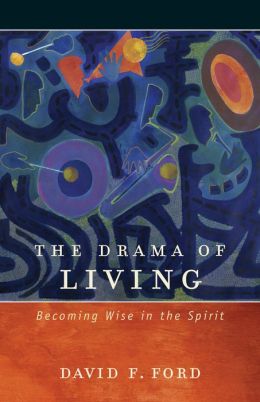 with this release, Brazos shows themselves to be one of the most important presses in the North American religious publishing landscape. I’ve been waiting for this sequel to The Shape of Living for, oh, gee, maybe fifteen years. I read that book about the time my father died in car wreck (not realizing there was a chapter on death) and it took my breath away. Subtle, nuanced, deep, beautiful without being flamboyant, this wise, thoughtful theologian has given us practical theology and a spirituality of life itself. It isn’t simple, but it is eloquent.
with this release, Brazos shows themselves to be one of the most important presses in the North American religious publishing landscape. I’ve been waiting for this sequel to The Shape of Living for, oh, gee, maybe fifteen years. I read that book about the time my father died in car wreck (not realizing there was a chapter on death) and it took my breath away. Subtle, nuanced, deep, beautiful without being flamboyant, this wise, thoughtful theologian has given us practical theology and a spirituality of life itself. It isn’t simple, but it is eloquent.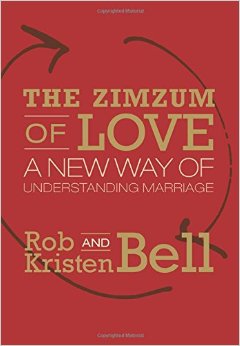 he ZimZum of Love: A New Way of Understanding Marriage Rob and Kristen Bell (HarperOne) $24.99 I suppose you know Bell’s pushing the boundaries, very creative, delightfully interesting and poetic writing style. I think you know he speaks to and for many, many people of diverse faith. I think he brings a lot of very helpful, Biblically-informed insight, and here he writes — perhaps almost like he did in that amazing little book on grief (Drops Like Stars) about a very personal, human situation: marriage. Tzimtzum is a Hebrew word, used at least in the Rabbinic traditions, as a way of getting at this energy of of creation. It’s about mutuality, and I suppose it is fair to say this new book includes a little sciency stuff, a little theology, a little self-help practical advise rooted in the deeper mysteries of grace, something built deep into the very fabric of the universe. There are some funny dialogues between Rob and his wife, and one I read touched me right away.
he ZimZum of Love: A New Way of Understanding Marriage Rob and Kristen Bell (HarperOne) $24.99 I suppose you know Bell’s pushing the boundaries, very creative, delightfully interesting and poetic writing style. I think you know he speaks to and for many, many people of diverse faith. I think he brings a lot of very helpful, Biblically-informed insight, and here he writes — perhaps almost like he did in that amazing little book on grief (Drops Like Stars) about a very personal, human situation: marriage. Tzimtzum is a Hebrew word, used at least in the Rabbinic traditions, as a way of getting at this energy of of creation. It’s about mutuality, and I suppose it is fair to say this new book includes a little sciency stuff, a little theology, a little self-help practical advise rooted in the deeper mysteries of grace, something built deep into the very fabric of the universe. There are some funny dialogues between Rob and his wife, and one I read touched me right away. 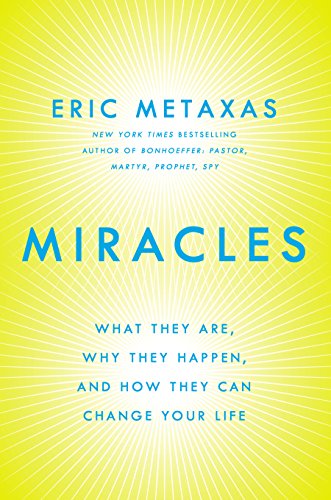 (Dutton) $27.95 I am sure you know: this guy is a way too talented follow, an amazing writer, a great conversationalists, a fabulously entertaining storyteller, funny as all get out (yes, it is true, he used to write for Veggie Tales) and his early books were very clever, straight one questions-and-replies for seekers and skeptics. This sort of brings all of this together in an amazingly energetic study and apologetic for that one-word title that has been appropriated by everybody from C.S. Lewis (always worth re-reading) to the smarmy tele-evangelist that is hardly worth watching for a moment. Yes, this topic has been done and redone, explored well, and poorly. This books has tons of fun and exemplary endorsements — from the hilarious Susan Isaacs and very smart actress to the artist Makoto Fujimura to the Daily Beast journalists Kirsten Powers.
(Dutton) $27.95 I am sure you know: this guy is a way too talented follow, an amazing writer, a great conversationalists, a fabulously entertaining storyteller, funny as all get out (yes, it is true, he used to write for Veggie Tales) and his early books were very clever, straight one questions-and-replies for seekers and skeptics. This sort of brings all of this together in an amazingly energetic study and apologetic for that one-word title that has been appropriated by everybody from C.S. Lewis (always worth re-reading) to the smarmy tele-evangelist that is hardly worth watching for a moment. Yes, this topic has been done and redone, explored well, and poorly. This books has tons of fun and exemplary endorsements — from the hilarious Susan Isaacs and very smart actress to the artist Makoto Fujimura to the Daily Beast journalists Kirsten Powers. 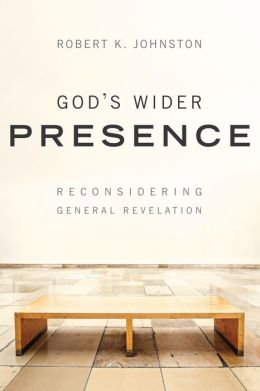 od’s Wider Presence: Reconsidering General Revelation Robert K. Johnston (Baker Academic) $25.99 Wow, I have got to get to this, and soon. Johnston is one of the premier faith and film scholars, having written widely about the common grace that comes to us through engagement with the arts, and specifically, the art of cinema. As Michael Frost says, “Johnston weaves a marvelously rich tapestry that opens up our understanding of how God’ whispers to us through nature, conscience, and culture. Who else could reference baroque art, Gerard Manley Hopkins, Ingmar Bergman, C.S. Lewis, and Star Wars in such a scholarly and yet readable fashion. I thoroughly enjoyed every page.”
od’s Wider Presence: Reconsidering General Revelation Robert K. Johnston (Baker Academic) $25.99 Wow, I have got to get to this, and soon. Johnston is one of the premier faith and film scholars, having written widely about the common grace that comes to us through engagement with the arts, and specifically, the art of cinema. As Michael Frost says, “Johnston weaves a marvelously rich tapestry that opens up our understanding of how God’ whispers to us through nature, conscience, and culture. Who else could reference baroque art, Gerard Manley Hopkins, Ingmar Bergman, C.S. Lewis, and Star Wars in such a scholarly and yet readable fashion. I thoroughly enjoyed every page.”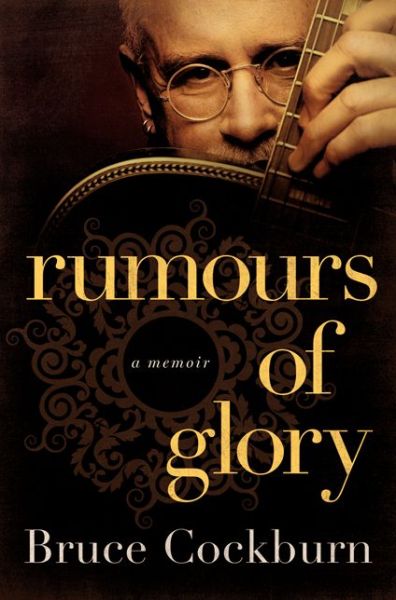 500 pages of this in a few days over a weekend — my friend Jeff blessed me generously by giving me an early manuscript that he somehow acquired, and I’ve hardly been happier all year. What a read! How fun to revisit old songs and earlier albums, learning about them all.
500 pages of this in a few days over a weekend — my friend Jeff blessed me generously by giving me an early manuscript that he somehow acquired, and I’ve hardly been happier all year. What a read! How fun to revisit old songs and earlier albums, learning about them all. 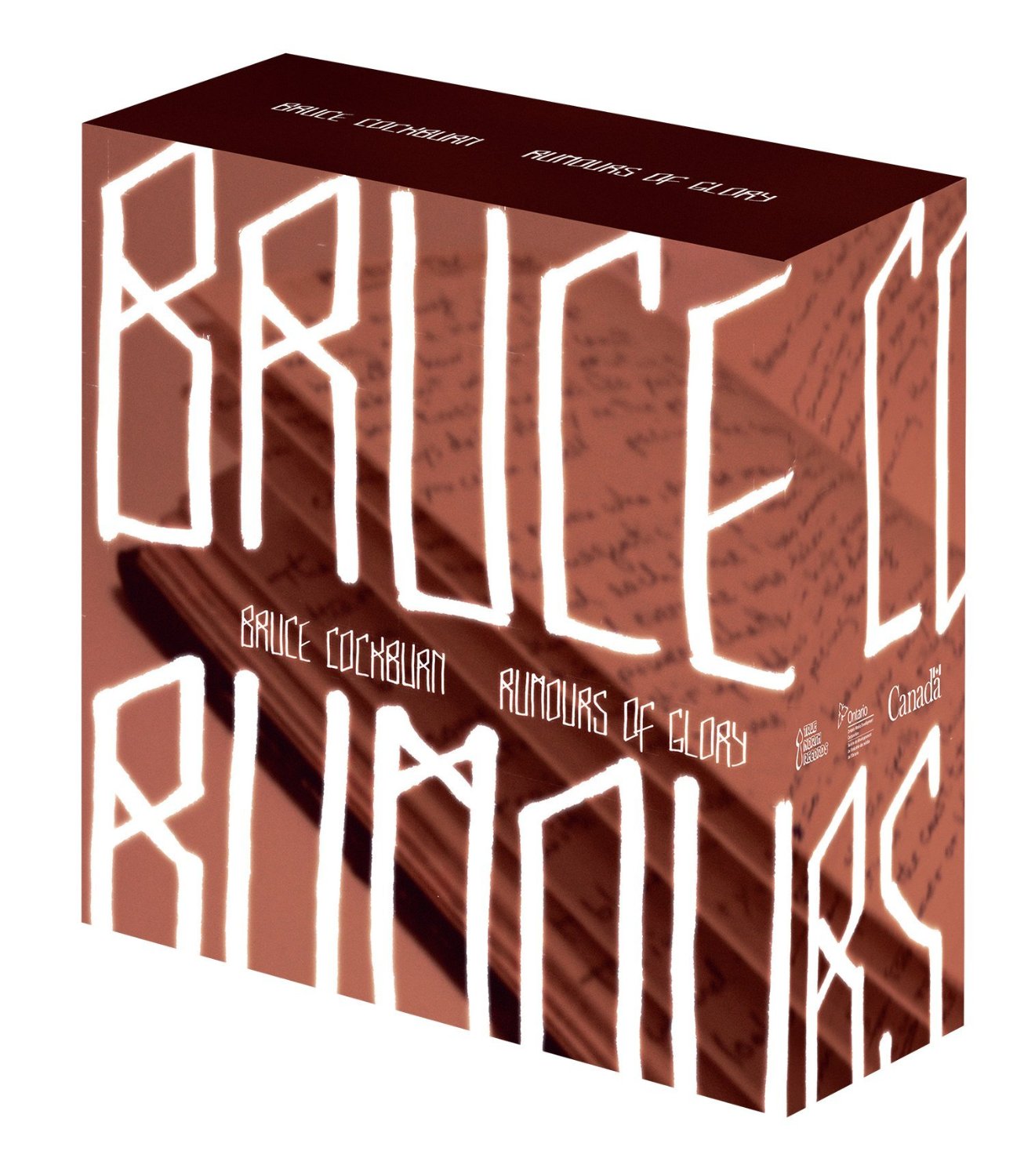 with this (8 CDs, one an entire disc of previously unreleased or rare releases) and a video of concert footage, as well as a 90-some page booklet that is said to be beautiful. It retails for $149.99 but we will sell it on sale, for $20.00 less– $129.99, if you just have to have it. It, too, is called Rumours of Glory: Limited Edition Boxed Set.
with this (8 CDs, one an entire disc of previously unreleased or rare releases) and a video of concert footage, as well as a 90-some page booklet that is said to be beautiful. It retails for $149.99 but we will sell it on sale, for $20.00 less– $129.99, if you just have to have it. It, too, is called Rumours of Glory: Limited Edition Boxed Set.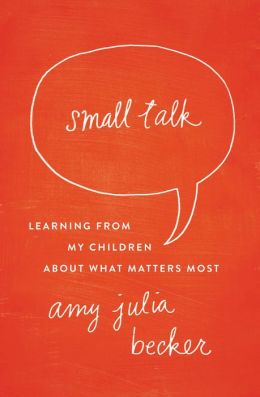 mall Talk: Learning from My Children About What Matters Most Amy Julia Becker (Zondervan) $15.99 Becker writes about faith, family, and disability for parents.com, the New Yorker Times, The Christian Century, Huffington Post, etc. Her first book (A Good and Perfect Gift about “a little girl named Penny” was excellent, and widely admired. (It was named one of the Top Ten Religious Books of 2011 by Publishers Weekly.) This just came in today, so I haven’t yet read any of it, but we all know that sometimes God uses the smallest voices to teach us great truths. The three main parts of these essays are “Holding On” “Letting Go” and “Growing Up” and I think it looks very, very good. excellent writers I admire give rave reviews — women like Margot Starbuck, Rachel Marie Stone, Ellen Painter Dollar, Rebekah Lyons. Looking for a smart, entertaining,reminder of the joys and issues of parenting, by a beautiful, thoughtful writer. This looks fabulous!
mall Talk: Learning from My Children About What Matters Most Amy Julia Becker (Zondervan) $15.99 Becker writes about faith, family, and disability for parents.com, the New Yorker Times, The Christian Century, Huffington Post, etc. Her first book (A Good and Perfect Gift about “a little girl named Penny” was excellent, and widely admired. (It was named one of the Top Ten Religious Books of 2011 by Publishers Weekly.) This just came in today, so I haven’t yet read any of it, but we all know that sometimes God uses the smallest voices to teach us great truths. The three main parts of these essays are “Holding On” “Letting Go” and “Growing Up” and I think it looks very, very good. excellent writers I admire give rave reviews — women like Margot Starbuck, Rachel Marie Stone, Ellen Painter Dollar, Rebekah Lyons. Looking for a smart, entertaining,reminder of the joys and issues of parenting, by a beautiful, thoughtful writer. This looks fabulous!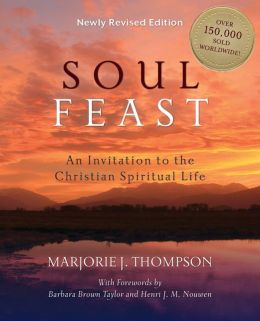 oul Feast: An Invitation to the Christian Spiritual Life Marjorie J. Thompson (Westminster/John Knox) $17.00 This newly revised, expanded, updated edition just came out, and I’m glad it did. It carries a new foreword by the always eloquent Barbara Brown Taylor (as well as the classic one by Henri Nouwen.) Whenever anyone asks about good primers on spiritual formation, or a handbook for deeper growth, this is always one of the first I think of. From the contemplative practices of meditation to the corporate practice of worship, from Bible study to prayer, this offers nuanced, wise insights and helpful, good advice. She worked for over a decade as the Director of Congregational Ministry with Upper Room Ministries. We recommend this as a tool for your work, or, as Taylor says, “a map to living water, along with a packing list of what you might need…”
oul Feast: An Invitation to the Christian Spiritual Life Marjorie J. Thompson (Westminster/John Knox) $17.00 This newly revised, expanded, updated edition just came out, and I’m glad it did. It carries a new foreword by the always eloquent Barbara Brown Taylor (as well as the classic one by Henri Nouwen.) Whenever anyone asks about good primers on spiritual formation, or a handbook for deeper growth, this is always one of the first I think of. From the contemplative practices of meditation to the corporate practice of worship, from Bible study to prayer, this offers nuanced, wise insights and helpful, good advice. She worked for over a decade as the Director of Congregational Ministry with Upper Room Ministries. We recommend this as a tool for your work, or, as Taylor says, “a map to living water, along with a packing list of what you might need…”